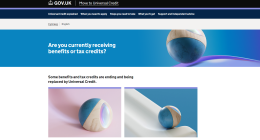
Finding qualified prospects is key to growing your business.
April 4, 2020 5 min read
Opinions expressed by Entrepreneur contributors are their own.
Too much prospect communication comes across as nagging, desperate and unprofessional. Too little prevents salespeople from laying the foundation for good relationships. Is there a middle ground?
According to a new study from Accenture, 80 percent of frequent B2B buyers changed providers in a 24-month period. To avoid falling victim to heavy churn, entrepreneurs and their sales teams can’t afford to play a guessing game with prospect touchpoints.
Mastering the art of communication frequency requires a careful balance, though. Not only must salespeople make prospects feel appreciated and valued, but they must also spend as much time as possible bringing in new business. Relationships are great, but when prospects with a limited budget and finicky demands ask for too much time, salespeople need to know when to let go.
Related: Grow Your Business on a Budget With This DIY Landing Page Service
What makes one touchpoint better than another when trying to grow your business?
Engaging with prospects is a dance. The best salespeople and entrepreneurs understand when to push the tempo and when to let the other party set the pace. Pick the wrong tactic at the wrong moment, and a once-interested prospect will quickly start looking for a new partner.
In this new decade, where data intelligence and personalization have become the expectation, sellers must add value to the buyer journey at every touchpoint. Instead of asking whether someone is ready to purchase, salespeople should provide more context, point to other relevant resources and ensure prospects feel they’re in control.
Close more sales with more qualified prospects by making the most of these critical touchpoints:
1. A better version of a first email.
Marketing may handle this early exchange, but regardless of who’s responsible, a good first impression sets the stage for trust on both sides.
Experienced salespeople understand that the first outreach isn’t truly the beginning of the relationship. Prospects today view all sorts of media and materials online and in print before taking an action that generates an email. However, by turning this first opportunity to engage into something special, salespeople can differentiate themselves in the eyes of people looking to purchase.
Instead of sending a standard cold email inviting prospects to ask questions, try a video greeting. Maintain a few professional standards for lighting and sound, but don’t get hung up on the details. Use the information the prospect submitted to create a short video, and include a few tips or next steps. Then, send the email and wait for the (now much more likely) reply.
Related: Losing Control May Help Grow Your Business
2. Engagement without encroachment on social media.
Maintaining an active presence on social media provides a host of benefits for young companies. In sales, social media allows brands and representatives to connect directly with prospects on a level that feels comfortable for both parties.
Limit social media engagement to brand-owned channels and appropriate public spaces. Remember, the goal is to continue the conversation, not to get blocked or reported as spam. Inviting people to send messages with questions is fine, but don’t DM people about special promotions unless they ask explicitly.
Brands, on average, post 23 times as much promotional content as responses to prospect questions on social channels. Get users involved by answering questions as often as possible and posting more user-generated content. Maintain an active presence with real humans during business hours; when the doors close, lean on chatbots to continue the conversation and provide context for future prospect engagement.
3. Smart outreach at natural moments.
Today’s buyers know that companies track their online movements and email open rates. While prospects prefer to maintain privacy, companies can’t let their collected data go to waste. Smart outreach based on good data, using workflow automation and appropriate tools, empowers businesses to connect with prospects in the moments when they’re most willing to move down the funnel.
For example, say a prospect usually opens emails and clicks links but has yet to reach out for more information. Workflow automation tools can identify these opportunities for meaningful touchpoints and either prompt salespeople to reach out or send automated responses. In some cases, this could be a perfect opportunity for a follow-up video email.
Related: Learn How to Grow Your Business on a Budget By Outsourcing
Don’t let best practices and other businesses dictate what qualifies as smart outreach. Different companies and prospect pools prioritize different things. One whitepaper download might matter less to a software business than three email click-throughs matter for a machinery and equipment sales company.
In the dance of prospecting, pitching, and closing, don’t get caught doing the tango with prospects looking for a waltz. Consider the most important touchpoints for the target audience, optimize communications to make the most of those opportunities and start having more productive conversations.
This article is from Entrepreneur.com









